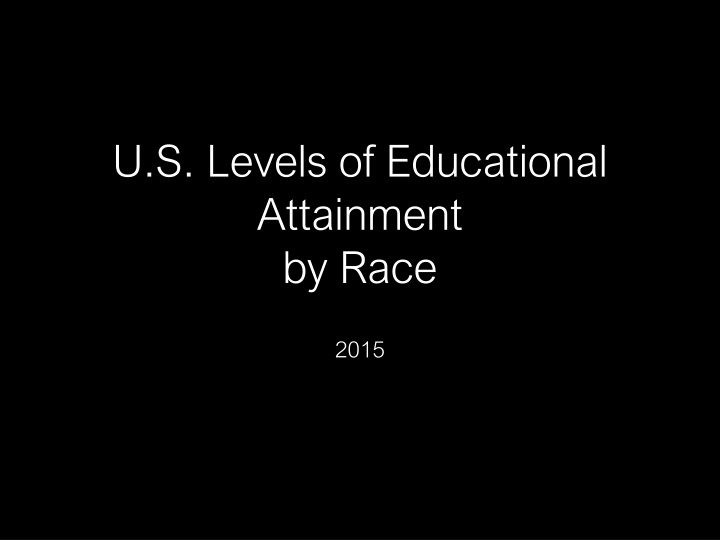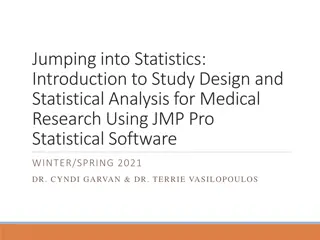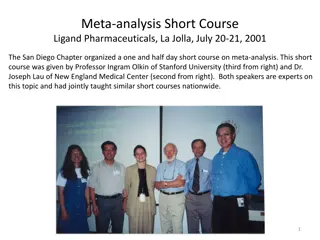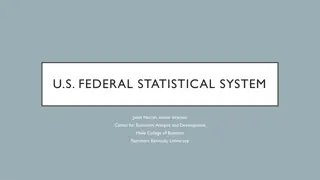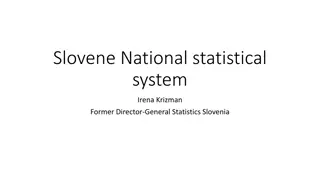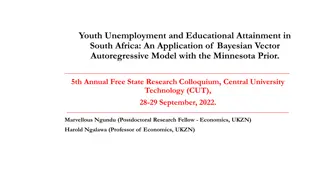Educational Attainment and Demographics: A Statistical Overview
Analyzing trends in educational attainment and demographics based on race in the U.S. from 1990 to 2014, including data on bachelor's and master's degrees by racial groups. Highlighting the changes in college attendance and graduate degree attainment over the years.
Download Presentation

Please find below an Image/Link to download the presentation.
The content on the website is provided AS IS for your information and personal use only. It may not be sold, licensed, or shared on other websites without obtaining consent from the author.If you encounter any issues during the download, it is possible that the publisher has removed the file from their server.
You are allowed to download the files provided on this website for personal or commercial use, subject to the condition that they are used lawfully. All files are the property of their respective owners.
The content on the website is provided AS IS for your information and personal use only. It may not be sold, licensed, or shared on other websites without obtaining consent from the author.
E N D
Presentation Transcript
U.S. Levels of Educational Attainment by Race 2015
Bachelors Degrees Earned by Race /Ethnicity 1990-2006 by % Distribution 1990 2000 2006 Total Bachelor s 100.0% 100.0% 100.0% White, non-Hispanic 84.4% 75.1% 72.4% Black, non-Hispanic 5.8% 8.7% 9.6% Hispanic 3.1% 6.1% 7.2% Asian or Pacific Islander 3.7% 6.3% 6.9% American Indian/Alaska Native 0.4% 0.7% 0.7% Nonresident Alien 2.5% 3.2% 3.1% Source: U.S. Center for Education Statistics, Digest of Education Statistics, annual
% of U.S. Population 2014 by Race with 2060 Projections 70 62 60 50 44 40 29 30 17 20 13 12 9 10 5 5 2 0 0 0 White Hispanic Black Asian 2 Races American Indian Source: U.S. Census Bureau
After 2000, a new category entered many demographic studies: people of 2 or More Races.
Since 2005, almost every racial group has increased the % of its population that attends college.
% of persons of each race 2529 years old with Bacherlor s degree or higher Asian/Pac ific Islander American Indian Year Total White Black Hispanic 2 Races 2005 28.8 34.5 17.6 11.2 60.3 16.4 28.0 2010 31.7 38.6 19.4 13.5 55.8 18.6 29.8 2014 34.0 40.8 22.4 15.1 60.8 5.6 32.4 Source: Digest of Education Statistics, nces.ed.gov
Gains for each group between 2005 and 2014 are smaller in their attainment of more graduate degrees.
% of persons of each race 2529 years old with Master s degree or higher Asian/Pac ific Islander American Indian Year Total White Black Hispanic 2 Races 2005 6.3 7.5 2.6 2.1 16.9 * 7.0 2010 6.8 7.7 4.7 2.5 17.9 * 7.0 2014 7.6 9.0 3.9 2.9 18.8 * 7.1 Source: Digest of Education Statistics, nces.ed.gov * no reliable data: too few cases, or coefficient of variation 50% or higher
Distribution of students by racial groups in undergraduate education has come to resemble, more closely, the general racial composition of the U.S.
For instance, in 2013, 13.2 % of undergraduates were Black students, while Black people comprised 12.4% of the population in 2014.
Distribution of Undergraduate Students by Race & Gender 2013 Group Number % of All Students All 20,375,521 100.0% Male 8,860,546 43.5% Female 11,514,974 56.5% American Indian 154,127 0.8% Asian/Pacific Islander 1,190,119 5.8% Source: Chronicle of Higher Education Analysis of U.S. Department of Education data
Distribution of Undergraduate Students by Race & Gender 2013 Group Number % of All Students All 20,375,521 100.0% Black 2,685,193 13.2% Hispanic 2,924,695 14.4% White 10,891,299 53.5% Mixed Race 531,353 2.6% Race Unknown 1,160,161 5.7% Source: Chronicle of Higher Education Analysis of U.S. Department of Education data
From undergraduate to graduate education, across all disciplines, participation among most groups declines by %, except among white & Asian students.
Distribution of U.S. Graduate Students by Race & Gender 2014 Group Number % of All Students All 372,660 100.0% Male 143,775 39.0% Female 225,161 61.0% American Indian 1,839 0.5% Asian/Pacific Islander 25,995 7.0% Source: CGS/GRE Survey of Graduate Enrollment & Degrees
Distribution of U.S. Graduate Students by Race & Gender 2014 Group Number % of All Students All 372,660 100.0% Black 41,999 11.3% Hispanic 35,870 9.6% White 232,520 62.4% Two or More Races 9,818 2.6% Race Unknown 24,619 6.6% Source: CGS/GRE Survey of Graduate Enrollment & Degrees
If MFA programs resembled the 2014 distribution of graduate students by race across all academic disciplines
approximately six out of every ten MFA students would be white; one, Black; one, Hispanic; one, Asian; and one more, of an unknown race or of two or more races.
40% of creative writing grad students should be people of color to match 2014 levels of educational attainment across all disciplines.
In the 1990s, AWP conducted an NEA- funded project to establish MFA programs at HBCUs. All the HBCUs leaders chose not to establish MFA programs, though AWP presented a strong case for their need and the popular demand for such programs.
Echoing the sentiments of families with their first generation to go to college, HBCU leaders preferred their students concentrate on academic disciplines of more lucrative professions: law, medicine, business, engineering, etc.
The younger the age group, the more people of color in that group. 18% of Boomers are people of color. 43% of Millennials are people of color.
By 2060, more than 50% of college-bound students will be people of color.
% of U.S. Population 2014 by Race with 2060 Projections 70 62 60 50 44 40 29 30 17 20 13 12 9 10 5 5 2 0 0 0 White Hispanic Black Asian 2 Races American Indian Source: U.S. Census Bureau
If MFA programs in 2060 resembled the projected diversity of the total U.S. population
approximately four out of every ten MFA students would be white; three, Hispanic; one, Black; one, Asian; and one more, of another race or of two or more races.
